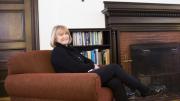"It was a very simple year." So Elizabeth C. Huidekoper, vice president for finance, characterizes Harvard's getting and spending for the fiscal year ended June 30, 1999. The annual Financial Report to the Board of Overseers of Harvard College, released in December, shows revenue increasing $108 million, or 6.5 percent, to $1.787 billion. Expenses are rising more rapidly--by $154.6 million, or 9.5 percent, to $1.784 billion--but a modest surplus remains. The expense growth reflects both one-time items and a gearing up of activity by the University's 10 schools, which are expanding programs and facilities following the previously announced $95-million increase--28 percent--in distributions from the endowment e!=ective this year (see "The Payoff," January-February 1999, page 62).
The fiscal-year 1999 revenue growth included an increase in investment income (primarily from the endowment) of just over 7 percent, to nearly a half-billon dollars--the largest source of University revenue. Income from students (net of financial aid)--the second-largest revenue source--rose just 3.8 percent; a moderate rise in tuition was offset in part by further robust growth in continuing-education programs, especially at the Business School and the Kennedy School of Government. Sponsored-research funds grew more than 7 percent, twice the 1998 rate, to $401.6 million, as federal support for medical research increased.
Salaries and benefits, accounting for almost half of expenses, rose 7.8 percent to $869.9 million, significantly faster than in 1998. Expanded staffing, particularly for biomedical research, executive education, and technology, propelled the growth. Space and occupancy costs also rose notably, up 8.7 percent, as new buildings came on line and Harvard rented additional space to accommodate program growth. Operating expenses also increased as a result of accelerated spending on Project ADAPT, the University's administrative-systems program, and an accounting change. The latter--a $21-million charge for the year--brought Harvard's accounting for the lives of its buildings into line with the more rapid depreciation used in its calculation of "indirect" overhead costs reimbursed under federal research contracts, a practice now being adopted by universities nationwide.
Looking ahead, Huidekoper foresees major challenges in "how we manage relationships with Harvard's partners." Among them she lists financially stressed hospitals affiliated with the Medical School; technology partners with whom Harvard might conduct distance-learning ventures; and surrounding communities faced with University expansion. Referring to the expanding payroll and physical plant, she cautions about the financial markets: "We're undoubtedly going to have some sort of correction, so we have to be careful not to get overextended, to start programs we can't sustain if income falls."
In the nearer term, Huidekoper says, Harvard faces higher costs for recruiting, retaining, and training employees, and for health benefits. She also foresees "challenging" decisions about information-technology investments and partnerships.
But principally, Huidekoper is gratified by all the activity underway at Harvard that is merely abstracted in the financial statements. She says, "There is so much entrepreneurship from each individual faculty member" in conceiving new areas of research. So she encourages readers of the financial report to focus on its sections highlighting "the vitality of the academic programs happening every day. We miss some of that in the numbers."





